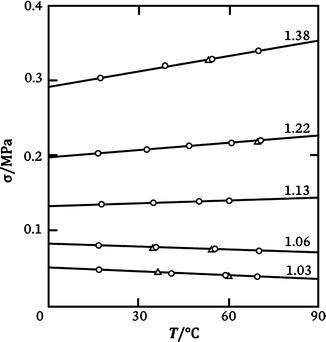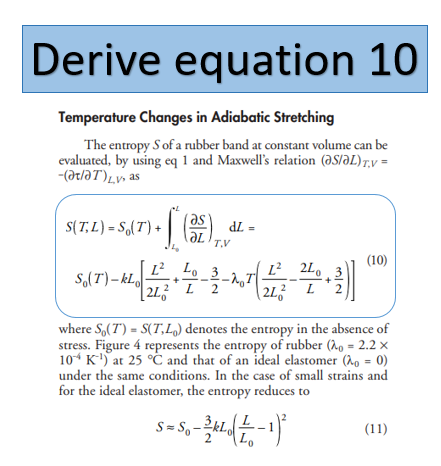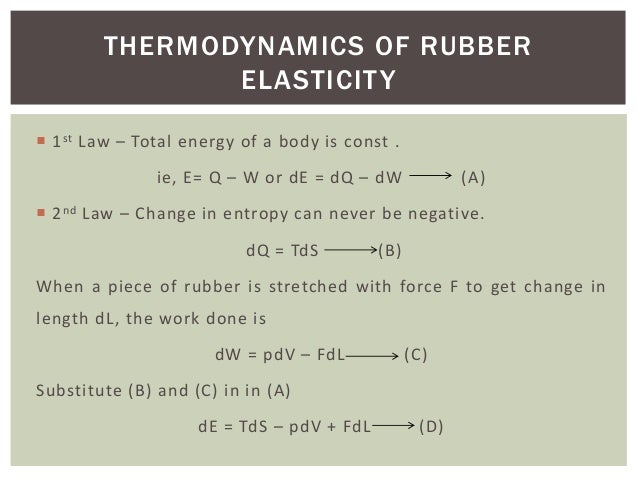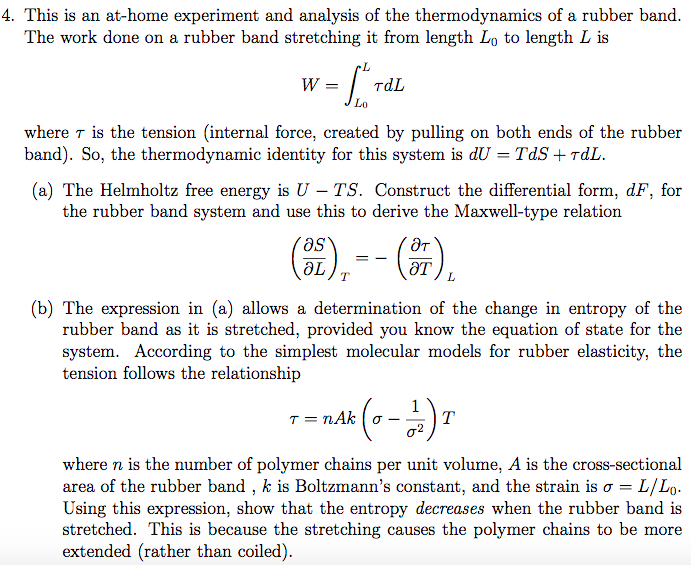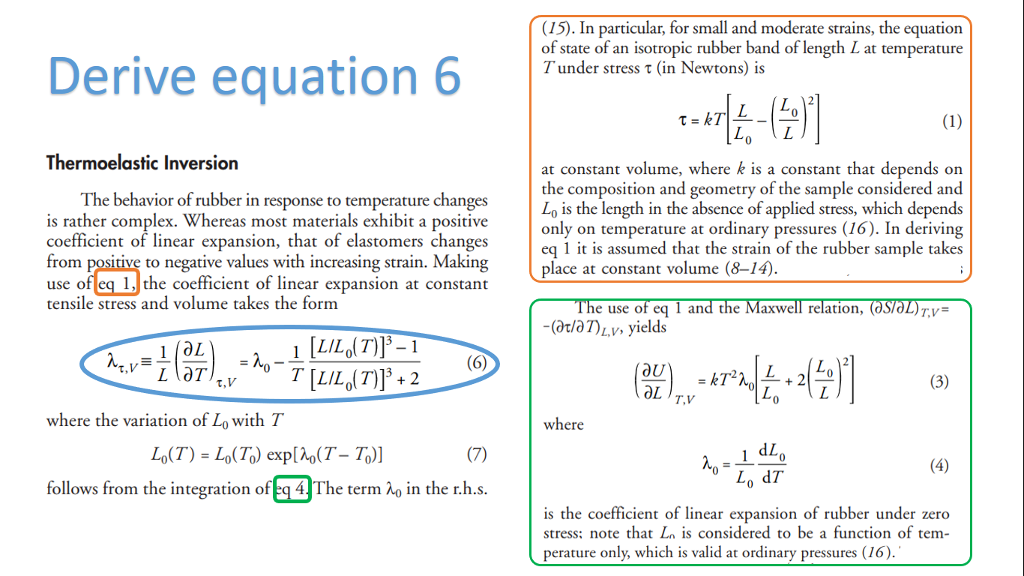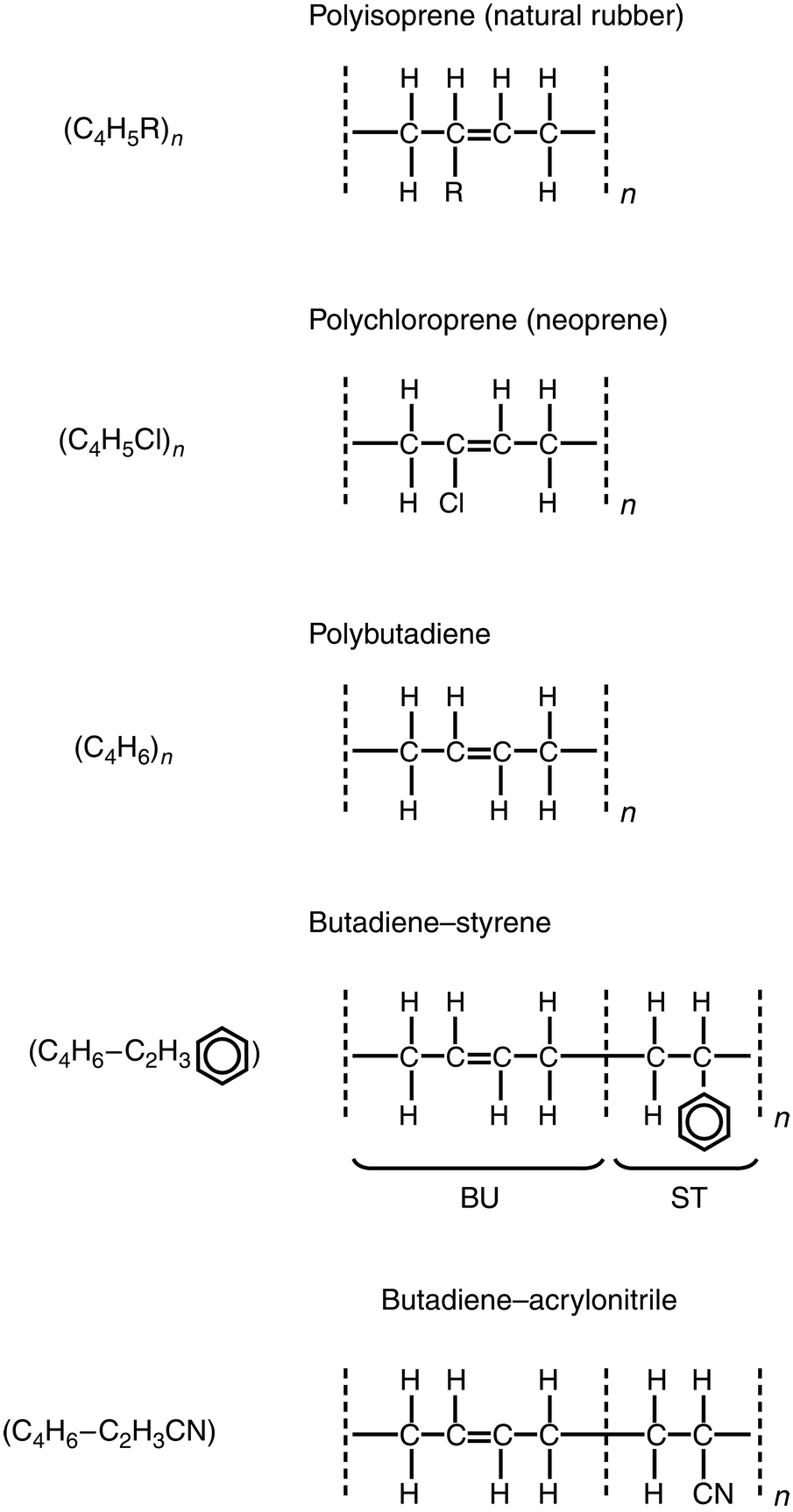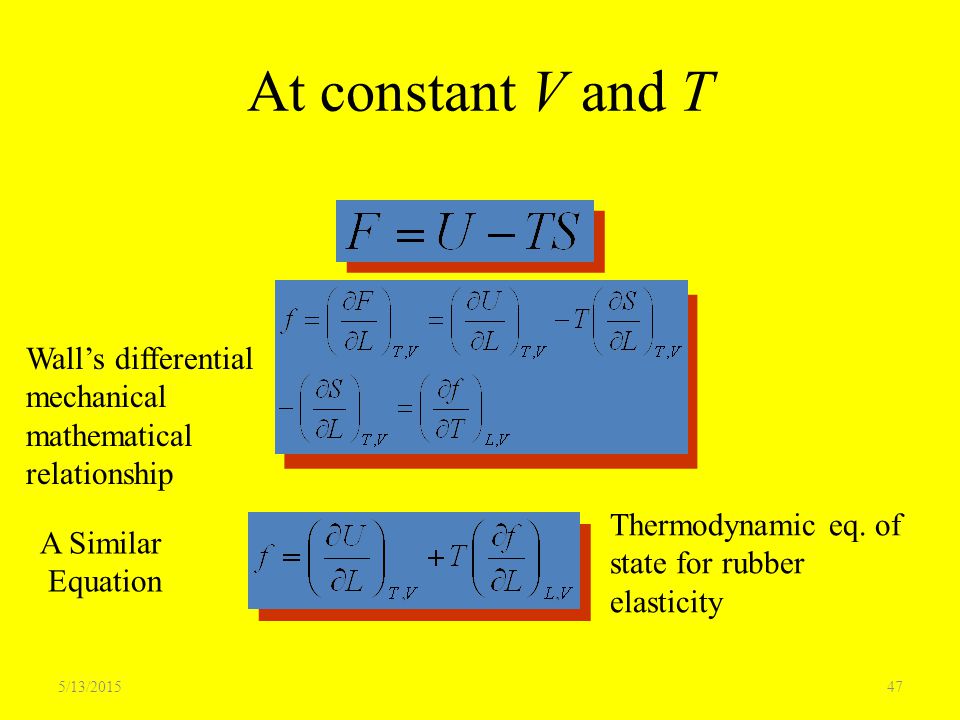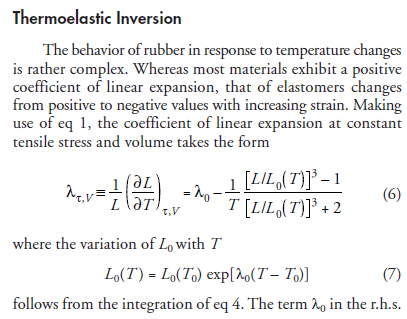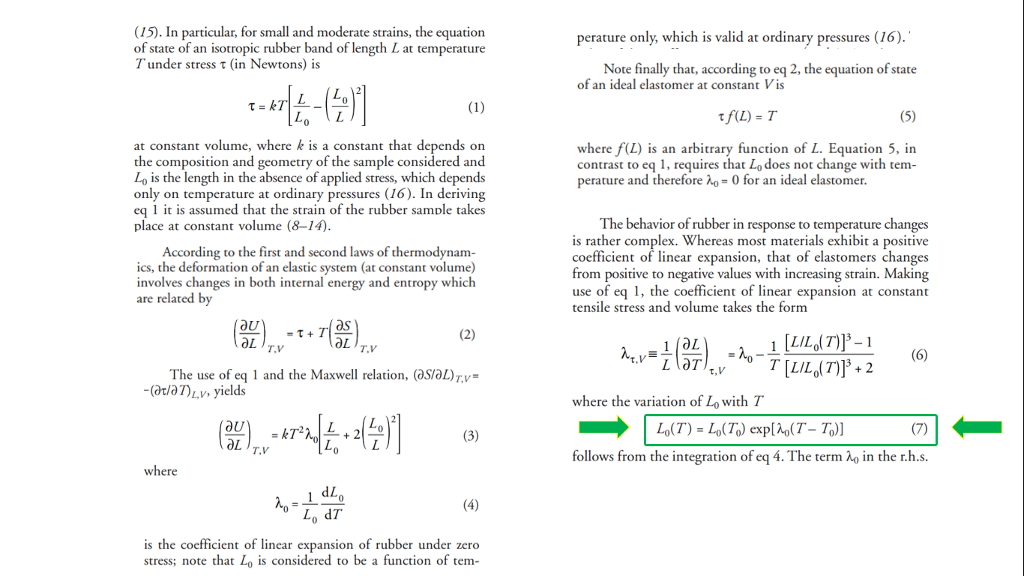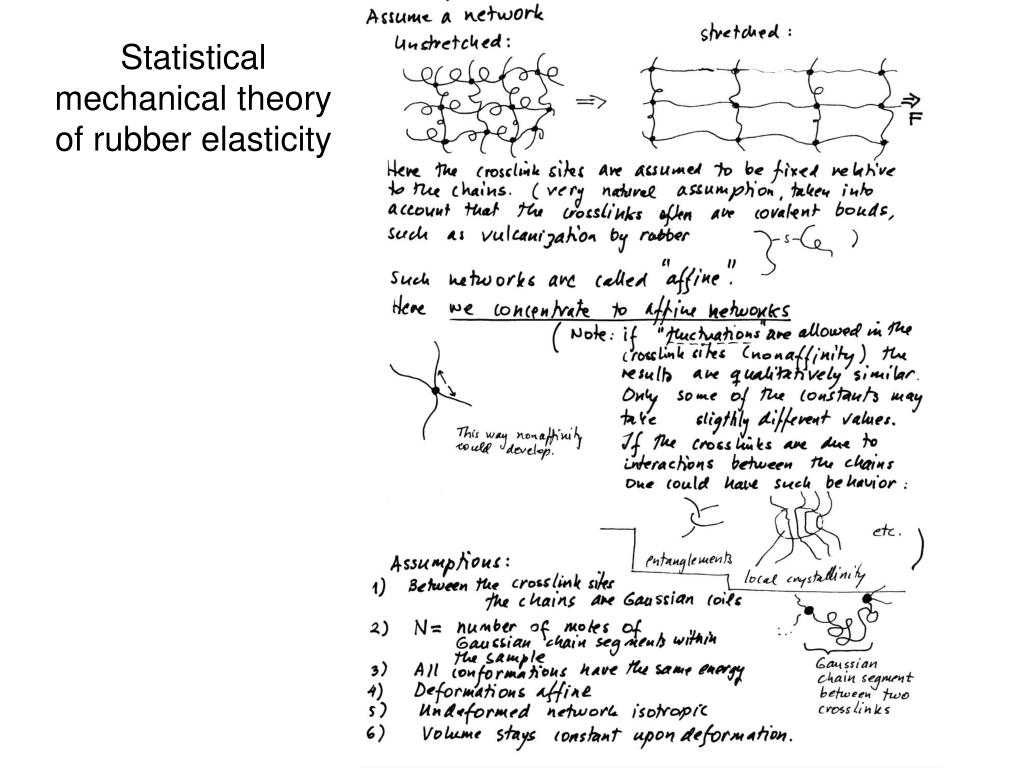The process of vulcanization which links the polymer molecules into a three dimensional network enables reversible thermodynamic measurements to be made on elastomeric materials from which the entropy and energy contributions to the free energy of deformation can be determined.
Thermodynamics of rubber elasticity.
Rubber elasticity refers to a property of crosslinked rubber.
It can be stretched by up to a factor of 10 from its original length and when released returns very nearly to its original length.
In the next section the choice of stress τ length l and temperature t as state variables is justified and a simple equation of state is presented.
Metallic materials possess energy elasticity while ideal.
The molecular processes responsible for rubber elasticity are most readily interpreted in terms of the constant volume coefficients u l v t and s l v t.
This can be repeated many times with no apparent degradation to the rubber.
Rubber elasticity is in fact the number of chains bounded by two cross link junctions a quantity called the number of active chains denoted.
Elastic properties of vulcanized rubber depend on the degree of linkage.
Thermodynamics of a rubber band.
If you released a rubber band with properties like that it would.
Here we need to also consider the extension.
Rubber is a member of a larger class of materials called elastomers and it is difficult to overestimate their economic and.
Rubberlike elasticity is described.
The energy component of the stress supported by the network is more or less independent of.
The molecular processes responsible for rubber elasticity are most readily interpreted in terms of the constant.
Taken as a whole the results from thermodynamic studies on lightly cross linked rubbery polymers support the view that the retractive force is primarily intramolecular in origin.
Thermoelastic measurements at constant volume are reported for a series of natural rubber samples.
Deformation is a constant volume process ν.
Thermodynamics of rubber elasticity at constant volume.
Without this property the rubber band would have no reason to tend towards a tangled state since the entropy would be about the same in both states.
2 thermodynamics of elasticity when we write down the di erential of uin courses in chemical thermodynamics we nor mally only consider pressure volume work.
The elastic recovery of rubber is due to its tendency to maximize the entropy.
Theory of rubber elasticity thermodynamics statistical mechanics and chain statistics kelvin kuhn guth mark james treloar and flory second law of thermodynamics.
This paper describes only the thermodynamic properties of vulcanized rubber.
The cross linking property of polymers is vital to the band s elasticity.
